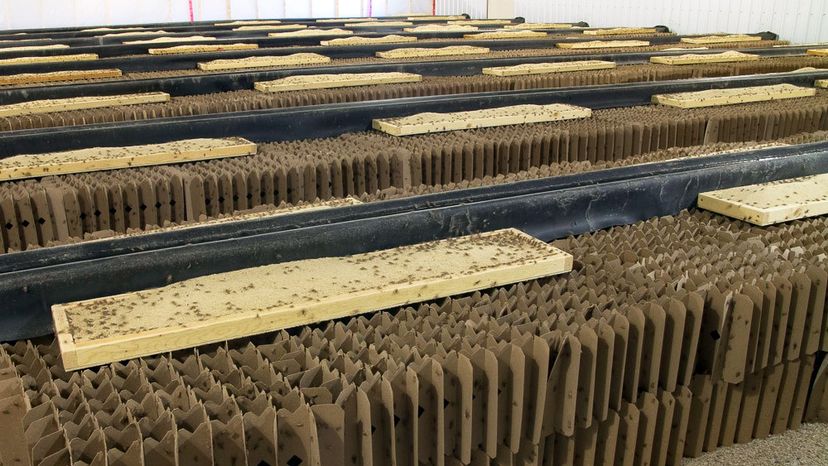The Cricket Farming Process

Bachhuber told his TEDx audience that the crickets reside in three different environments over the course of their seven-week life cycles. "They spend most of their time hanging out on egg cartons we call 'cricket high rises,' he says. "It's kind of a live/eat/work communal space." He says the insects consume a steady diet of organic grain-based feed and assorted fruits and veggies, and the lucky ones reach the breeding stage. "Each mother cricket will lay between 1,000 and 3,000 eggs in her lifetime," he says in his TEDx Talk. "We could be drowning in crickets in short order and that's not a situation I want to be in. And with seven weeks from hatch to harvest, we have to think about this pretty often."
The ideal conditions for cricket farming involve heat, humidity and a good amount of space, since the crickets like to spread out as they mature. "Eighty-five to 95 degrees (29 to 35 degrees Celsius) is a pretty standard temperature range and about 40 percent relative humidity," he says, noting that the process can take about 56 days, but can range according to the conditions. "It's temperature-dependent; so lower temperatures, they'll live longer, higher temperatures they burn hot and die young. They take a good long time to get up to maturity, but once they hit adulthood, the end is nigh and when they start breeding a lot, they maybe have two weeks to go."
Advertisement
When it comes to harvesting the crickets, Bachhuber is adamant that their executions are performed humanely. "You cool them and freeze them," he says. "They have this thing where they just slow down as their temperatures go down and they go into something called diapause, which is like hibernation, but more complete. They don't like to be cold, but it's not stressful." He says he wishes all livestock could be slaughtered in such a humane manner.